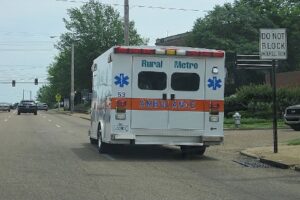
Figure 1: A sleeping child. When we sleep, we dream, but dreams are often influenced by the events of our daily lives.
Source: Wikimedia Commons
For many, living through the COVID-19 pandemic is a waking nightmare. Tore Nielsen of the Université de Montréal believes that the coronavirus may contribute to actual nightmares, citing growing worldwide reports of strange and memorable dreams dealing with the coronavirus1.
Nielsen is not alone in investigating how COVID-19 has impacted dreams. Kelly Bulkeley surveyed nearly 2500 American adults in early April to assess the ways COVID-19 impacts their dream recall. Bulkeley noted an almost 30% increase in dream recall, particularly among adults in their mid-thirties and younger. Bulkeley attributes this trend to the fact that younger people have been hit especially hard by the economic and social consequences of COVID-192. Similarly, Elizaveta Solomonova and Rebecca Robillard, of McGill University and the Royal’s Institute of Mental Health Research in Ottawa respectively, conducted a survey of 968 people and have preliminary findings that record the impact of the coronavirus on the wider variety of dreams in addition to its various mental health effects. They determined that 37% of individuals experienced “pandemic dreams” with clear connections to life during COVID-191. Deirdre Barrett, an assistant professor of psychology at Harvard Medical School, collected over 2500 dream responses in her survey, with at least 600 from healthcare workers. Barrett noticed common themes of contracting the coronavirus, being attacked by bugs, and facing natural disasters. Barrett believes dream material that does not directly relate to the virus is often still tied to it by association or metaphor3. Compiled dreams can be found at IDreamofCovid.com or at the Sleep and Dream Database.
Anxiety and trauma concerning COVID-19 may not be the sole culprit. Since lockdown began, individuals have had increased opportunities to sleep. Sleeping longer results in an increase in REM (rapid eye movement) sleep. Because REM sleep is typically when the most vivid dreams occur, it makes sense that dream recall has been increasing since people began self-isolating at home. Another theory is that dreams serve to provide social simulations that strengthen group structures—a function that is all the more essential in a period of social isolation1.
The COVID-19 dream surge is by no means over. Dream studies might help psychologists and psychiatrists identify the effects of COVID-19 on people’s psyches. For example, there may be an increase in need for professional help by healthcare workers if they continue to have dreams resembling trauma nightmares even after the pandemic’s conclusion3. Years from now, people might have COVID-19 dreams in the same way that some individuals dream as adults that they have forgotten to take a college final, returning to an old stressor.
For now, Barrett has some advice for people suffering from coronavirus-related dreams: think about what one wants to dream about before going to bed and try visualizing it. This will make one more likely to dream about the subject of one’s choice and less likely to experience a pandemic nightmare3. After all, people have more than enough to deal with during the day.
References
- Nielsen, T. (2020, October 01). The COVID-19 Pandemic Is Changing Our Dreams. Retrieved September 26, 2020, from https://www.scientificamerican.com/article/the- covid-19-pandemic- is-changing-our-dreams/
- Bulkeley, K. (2020, April 09). People May Be Remembering More Dreams During the Pandemic. Retrieved September 26, 2020, from https://www.psychologytoday.com/us/ blog/dreaming-in-the-digital-age/202004/people-may-be-remembering-more-dreams- during-the-pandemic
- Walsh, C. (2020, May 14). What Pandemic Dreams May Come: Harvard Researcher Says Many Having Nights Full of Bugs, Masks, and Natural Disasters. Retrieved September 26, 2020, from https://news.harvard.edu/gazette/story/2020/05/harvard-researcher-says- dreams-indicative-of-virus-fears/
Related Posts
Genomic Research For All Humanity
From DNA to Life. (Source: Wikimedia Commons, William Crochot) Our...
Read MoreInvestigating the Quality of Healthcare in Rural Areas
Cover Image: A rural Metro ambulance in Memphis, Tennessee. Rural...
Read MoreBacterial Treatment of Cancer
Abstract: Cancer treatment has long been an engaging field of...
Read MoreCaroline Conway




Comments are closed.